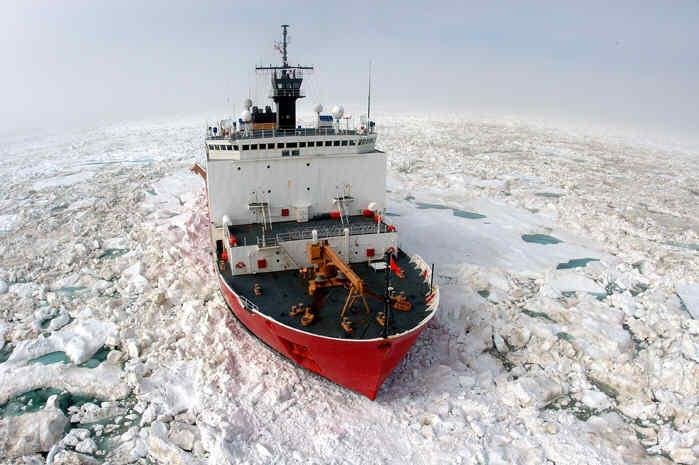The USCGC Healy plows through polar ice. Photo by U.S. Coast Guard/NSF
DUTCH HARBOR, Ala., Sept. 10 (UPI) -- The U.S. Coast Guard Cutter Healy became the first U.S. surface ship to reach the North Pole without assistance on Saturday.
Typically, icebreakers are accompanied by submarines that help clear a channel through the ice, but Healy successfully made the trek solo.
The feat marks the high point of a month-long journey that began in Dutch Harbor, Alaska. Healy reached the North Pole a week ahead of schedule, just days after President Obama became to first U.S. president to set foot inside the Arctic Circle, where he called on Congress hasten funding for the acquisition and construction of a new polar icebreaker.
CGC Healy is youngest of the Coast Guard's two operational icebreakers, part of a larger effort called Geotraces -- a partnership between the U.S. Coast Guard and the National Science Foundation aimed at better understanding the biogeochemical processes that shape the planet's oceans.
While plowing through the ice surrounding the North Pole, Healy and its crew will be measuring and analyzing the movements and makeup of the air, ice, snow, seawater, meltwater and sediments in the region.
"As the Arctic region continues to open up to development, the data gathered on board Healy during this cruise will become ever more essential to understanding how the scientific processes of the Arctic work, and how to most responsibly exercise stewardship over the region," the Coast Guard said in a statement.
Healy is a state-of-the-art floating scientific research machine. The 420-foot-long boat boasts 5,000 square feet of labs and rooms devoted to science.
"This week also included our first on-ice science station," scientists wrote in their most recent blog update. "Working throughout Thursday night into early Friday morning, we conducted multiple on-ice science experiments. Due to the 24 hours of daylight, scientists are able to get out on the ice and collect samples around the clock!"















